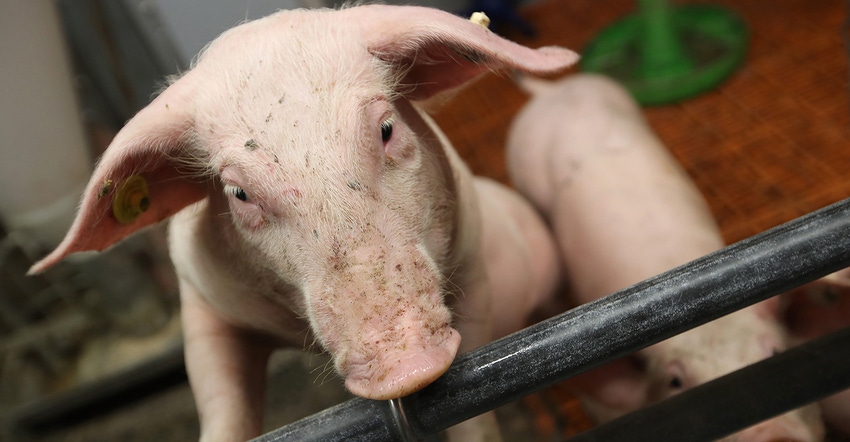Risk of infection is dependent on an understanding of exposures such as feed and smuggled pork products and the level of risk the industry can accept.
December 10, 2019

Two recent reports caught my eye concerning African swine fever virus over the past couple of weeks. The first is a report from Australia where a recent emphasis on inspection and detection at airports for smuggled pork products found that 22% were positive for ASFV. The second was a report that a drop in pork prices in China in November was due to a significant liquidation of frozen pork supplies. The reason for the liquidation was that the Chinese government had announced that they were going to test frozen stores for ASFV. All positive lots were to be destroyed.
The simple fact is that this world has never seen the existence of so much virus from this disease. It is a tough, long-lived virus that has contaminated pigs, pig production and processing facilities, the surrounding environment plus the pork supply in much of Southeast Asia. Nonetheless, producers are actively learning how to manage pig production under this constant threat. Many are succeeding by reducing the amount of ASFV produced in an outbreak, eliminating it more quickly, and defining the major risks of reintroduction.
Viewing ASFV as a biological contaminant draws good parallels with the struggles of chemical contamination. There are essentially four separate considerations in controlling contamination. It begins with limiting the original contamination. Once contamination is identified, it is followed by physical removal of the contaminant where possible, degrading the remaining contaminants and limiting the exposure to any residues.
The first aim is to lessen the extent of on-farm outbreaks. Chinese producers have the option of on-farm testing. Many farms, particularly sow units, test all sows that have high fevers or are dead. If found positive, sows in immediate contact are euthanized and also tested. The farm then has the option to wait and see if the disease has spread or depopulate the barn or herd. With the latter, the contamination rate is much lower than with a full outbreak, making cleanup more likely to be successful.
The math of it all is that we begin with a contaminated site, trucks, boots, feed supply, pork supply, etc. The numbers of ASF viruses can be in the trillions or more. In some cases we can mechanically clean and eliminate a percentage of the virus but is never absolute and dependent on the cleanability. Challenging surfaces such as wooden boxes on trucks need to be replaced with metal, and old concrete needs to be resurfaced.
After cleaning, the major measure for decontamination is the half-life. For any long-lived contaminant there is a measure of days, hours or minutes over which the population of viruses is halved. The challenge with talking half-lives is that there are no absolutes, but just reductions to acceptable risks. Heat, disinfectants and desiccation all need time to work, and the aim is to reduce the half-life from what is often measured in days to minutes. The aim is thus to reduce the exposure to an acceptable risk.
But what is an acceptable risk? Often, we have spoken in terms of an infectious dose, where we can reliably expect a pig to become infected. The converse, however, where the question is what dosage at which a pig will reliably not become infected is harder to define. It also depends on whether we are discussing a nursery in China or the industry of the United States. It cannot be tested, but a fair question is if a million pigs each ingested one live virus, can we reliably say no pig would be infected? The answer I hear is no.
Issues of safety from ASFV deviates from chemical models in that contamination of an infectious agent needs a higher level of vigilance and active engagement. Safety exists at a level that our tests cannot detect. It relies on the art of extrapolation of existing models and understanding of the elements of exposure.
For American farmers, this means not only putting safeguards at our borders, but also supporting efforts to reduce the amount of virus growing beyond our borders that can possibly enter the United States. With the large amount of virus currently being propagated, the probability that ASFV is entering the United States has increased significantly. The risk of herd infection is dependent on an understanding of broad exposures such as feed and smuggled pork products and the level of risk the industry can accept.
Source: John Deen, who is solely responsible for the information provided, and wholly owns the information. Informa Business Media and all its subsidiaries are not responsible for any of the content contained in this information asset.
You May Also Like


